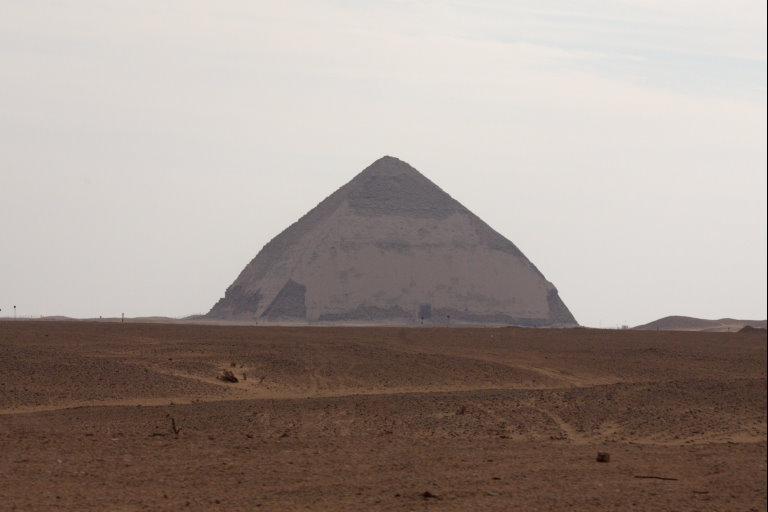This is the prototype for the non-stepped style of pyramids in
Egypt. Lower part has a much higher inclination than the upper part
(54° vs 43°) and it's thought that half way through
construction a correction was made to the angle for stability. This
second angle is the one used for every other pyramid built afterwards.
Interestingly this 43° angle is achieved when the perimeter
distance of the base of the pyramid is almost exactly 2π multiplied
by its height. To put it another way, if the square base was deformed
into a circle with the circumference equal to the sum of the original
four sides, then the radius of this circle would equal the height of
the pyramid.
Sneferu, the king who commissioned this pyramid, is the father of Khufu
who built the Great Pyramid at Giza.






